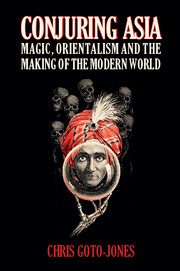2 - A theory of modern magic
from Part I
Published online by Cambridge University Press: 05 July 2016
Summary
Good, bad, and ugly magic
In the last chapter, we explored the varied landscape of the magical terrain at the turn of the twentieth century, testing the conceptual duplicity of ‘real’ and ‘pretend’ magic to reveal a technically unified space differentiated mainly by aesthetic and performative issues. Building on that basis, this chapter seeks to develop a way for us to differentiate between good and bad magic in order to enable a language of criticism and appreciation.
As was the case with the idea of ‘real and potent’ magic, it becomes evident very quickly that the idea of ‘good magic’ triggers all kinds of intuitive responses from people today. In particular, it emerges as another way to talk about so-called white magic – that is, supposedly supernatural magic that is seen as morally upright and ethically good. Here, good is juxtaposed with evil, white with black magic. For the general public, such distinctions seem to rely upon notions about supposedly diabolical means (techniques and devices) and/or diabolical feats; yet, as we saw in Chapter 1, such distinctions actually tend to rest upon the appearance of diabolical effects, as in the macabre of Bizarre Magic (where an atmosphere of horror is vital to the performance of horrific effects, but where nothing horrific is really accomplished).
It is important to note immediately, however, that the modern period has not seen the complete disappearance of (what we might call) diabolical means – that is, the use of morally offensive techniques or devices that are intended to accomplish magical feats. We might include in this category techniques that involve doing harm to animals or people: at one extreme, the technique might involve sacrificing an animal in the belief that doing so will serve as counter-physical supernatural causation for an otherwise impossible outcome (i.e., sacrifice is a type of magical behaviour that embodies specific magical beliefs), and at the other extreme we might think of the use of a collapsible birdcage to ‘vanish’ a dove, which actually kills the poor animal by squashing it flat.
- Type
- Chapter
- Information
- Conjuring AsiaMagic, Orientalism and the Making of the Modern World, pp. 55 - 98Publisher: Cambridge University PressPrint publication year: 2016



